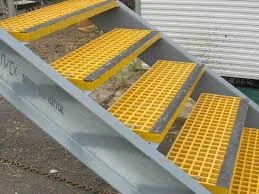
-
 Afrikaans
Afrikaans -
 Albanian
Albanian -
 Amharic
Amharic -
 Arabic
Arabic -
 Armenian
Armenian -
 Azerbaijani
Azerbaijani -
 Basque
Basque -
 Belarusian
Belarusian -
 Bengali
Bengali -
 Bosnian
Bosnian -
 Bulgarian
Bulgarian -
 Catalan
Catalan -
 Cebuano
Cebuano -
 China
China -
 China (Taiwan)
China (Taiwan) -
 Corsican
Corsican -
 Croatian
Croatian -
 Czech
Czech -
 Danish
Danish -
 Dutch
Dutch -
 English
English -
 Esperanto
Esperanto -
 Estonian
Estonian -
 Finnish
Finnish -
 French
French -
 Frisian
Frisian -
 Galician
Galician -
 Georgian
Georgian -
 German
German -
 Greek
Greek -
 Gujarati
Gujarati -
 Haitian Creole
Haitian Creole -
 hausa
hausa -
 hawaiian
hawaiian -
 Hebrew
Hebrew -
 Hindi
Hindi -
 Miao
Miao -
 Hungarian
Hungarian -
 Icelandic
Icelandic -
 igbo
igbo -
 Indonesian
Indonesian -
 irish
irish -
 Italian
Italian -
 Japanese
Japanese -
 Javanese
Javanese -
 Kannada
Kannada -
 kazakh
kazakh -
 Khmer
Khmer -
 Rwandese
Rwandese -
 Korean
Korean -
 Kurdish
Kurdish -
 Kyrgyz
Kyrgyz -
 Lao
Lao -
 Latin
Latin -
 Latvian
Latvian -
 Lithuanian
Lithuanian -
 Luxembourgish
Luxembourgish -
 Macedonian
Macedonian -
 Malgashi
Malgashi -
 Malay
Malay -
 Malayalam
Malayalam -
 Maltese
Maltese -
 Maori
Maori -
 Marathi
Marathi -
 Mongolian
Mongolian -
 Myanmar
Myanmar -
 Nepali
Nepali -
 Norwegian
Norwegian -
 Norwegian
Norwegian -
 Occitan
Occitan -
 Pashto
Pashto -
 Persian
Persian -
 Polish
Polish -
 Portuguese
Portuguese -
 Punjabi
Punjabi -
 Romanian
Romanian -
 Russian
Russian -
 Samoan
Samoan -
 Scottish Gaelic
Scottish Gaelic -
 Serbian
Serbian -
 Sesotho
Sesotho -
 Shona
Shona -
 Sindhi
Sindhi -
 Sinhala
Sinhala -
 Slovak
Slovak -
 Slovenian
Slovenian -
 Somali
Somali -
 Spanish
Spanish -
 Sundanese
Sundanese -
 Swahili
Swahili -
 Swedish
Swedish -
 Tagalog
Tagalog -
 Tajik
Tajik -
 Tamil
Tamil -
 Tatar
Tatar -
 Telugu
Telugu -
 Thai
Thai -
 Turkish
Turkish -
 Turkmen
Turkmen -
 Ukrainian
Ukrainian -
 Urdu
Urdu -
 Uighur
Uighur -
 Uzbek
Uzbek -
 Vietnamese
Vietnamese -
 Welsh
Welsh -
 Bantu
Bantu -
 Yiddish
Yiddish -
 Yoruba
Yoruba -
 Zulu
Zulu
Understanding GRP Flange Applications and Benefits in Modern Industries
Understanding GRP Flanges A Comprehensive Overview
Glass Reinforced Plastic (GRP), also known as Fiberglass Reinforced Plastic (FRP), is a composite material formed by embedding glass fibers in a resin matrix. This innovative material finds a multitude of applications across various industries due to its exceptional strength, durability, and lightweight properties. Among the many components made from GRP, flanges play a critical role, particularly in piping systems. This article delves into the significance of GRP flanges, their applications, advantages, and considerations in their usage.
What are GRP Flanges?
GRP flanges are specialized fittings designed to connect pipes or fittings in a piping system. They are manufactured using GRP materials, which lend unique characteristics to the flanges, making them suitable for specific environments that require corrosion resistance and mechanical strength. GRP flanges come in various sizes and configurations, such as flat flanges, raised face flanges, and blind flanges, to accommodate different piping requirements.
Applications of GRP Flanges
GRP flanges are widely utilized in industries such as water treatment, chemical processing, oil and gas, and construction. They are particularly favored in environments where traditional metal flanges are susceptible to corrosion and wear. For example, in wastewater treatment facilities, GRP flanges offer high resistance to corrosive substances, extending the lifespan of the piping system. Similarly, in chemical plants, where hazardous substances are handled, the use of GRP flanges minimizes the risk of leaks and the associated safety hazards.
Another key application is in the transportation of aggressive fluids, such as acids or alkalis. Industries that deal with such materials often opt for GRP due to its ability to resist chemical attacks, thus ensuring the integrity of the system and maintaining safety standards.
Advantages of GRP Flanges
grp flange

One of the primary advantages of GRP flanges is their lightweight nature. Compared to metal flanges, GRP flanges are considerably lighter, which simplifies the installation process and reduces transportation costs. This feature is particularly beneficial in large-scale projects where labor and logistical considerations are critical.
Additionally, GRP flanges offer excellent corrosion resistance, which mitigates the need for frequent repairs or replacements. This characteristic is particularly advantageous in environments with high humidity, chemical exposure, or saltwater, contributing to lower maintenance costs over time.
Another advantage is the insulation properties of GRP. Unlike metals, GRP does not conduct electricity, which minimizes the risk of electrical hazards. This property makes GRP flanges a safer choice, particularly in sensitive environments where electrical conductivity could pose serious risks.
Considerations When Using GRP Flanges
While GRP flanges offer numerous benefits, there are some considerations to keep in mind. The installation process requires proper techniques to ensure a secure and leak-proof connection. It is essential to follow manufacturer guidelines and industry standards to achieve the best performance.
Furthermore, GRP flanges may not be suitable for all applications. In high-pressure or high-temperature environments, the mechanical properties of GRP might be limited compared to metals. Hence, it is crucial to assess the specific requirements of the application to determine if GRP flanges are the right choice.
Conclusion
GRP flanges represent a significant advancement in piping technology, providing an effective solution for modern industrial needs. Their lightweight, corrosion-resistant, and non-conductive properties make them ideal for a wide range of applications, particularly in harsh environments. As industries continue to seek durable and efficient alternatives to traditional materials, the use of GRP flanges is set to grow, promising enhanced safety and longevity in piping systems.









